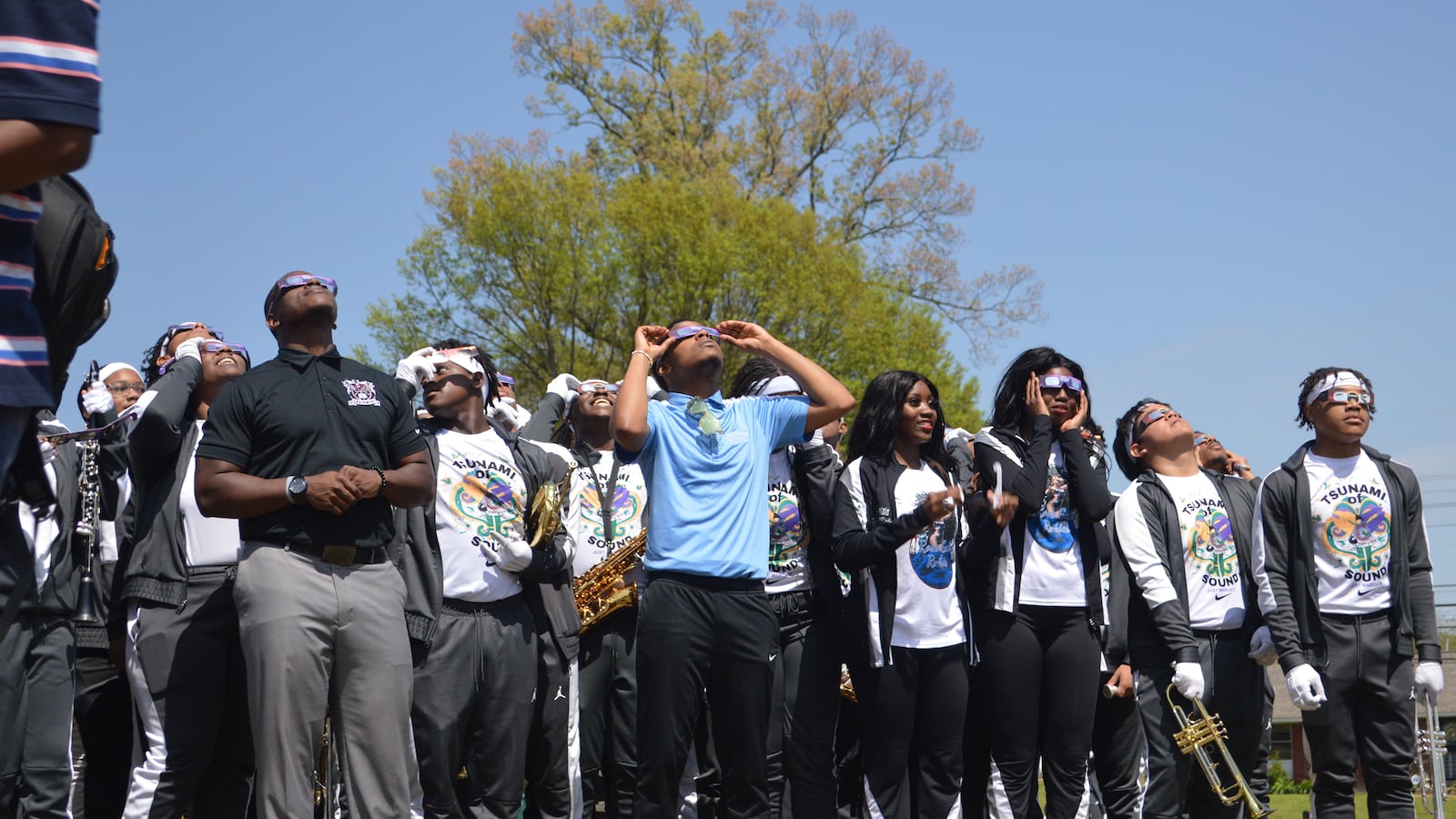Sign up for Chalkbeat Tennessee’s free daily newsletter to keep up with Memphis-Shelby County Schools and statewide education policy.
At 12:39 p.m., as the moon took its first bite of the sun, a group of Craigmont High School students looked up at the dome of the school’s planetarium to watch a video showing them exactly what would happen over the course of the day’s solar eclipse.
This time, it wasn’t the “missed opportunity” school staff sensed during the last solar eclipse in 2017, when Craigmont’s planetarium was still in disrepair.
Following a successful fundraising campaign several years ago, the Raleigh community jewel has become operational again, allowing students to visualize the perfect alignment of the sun, Earth, and moon that makes a solar eclipse happen.
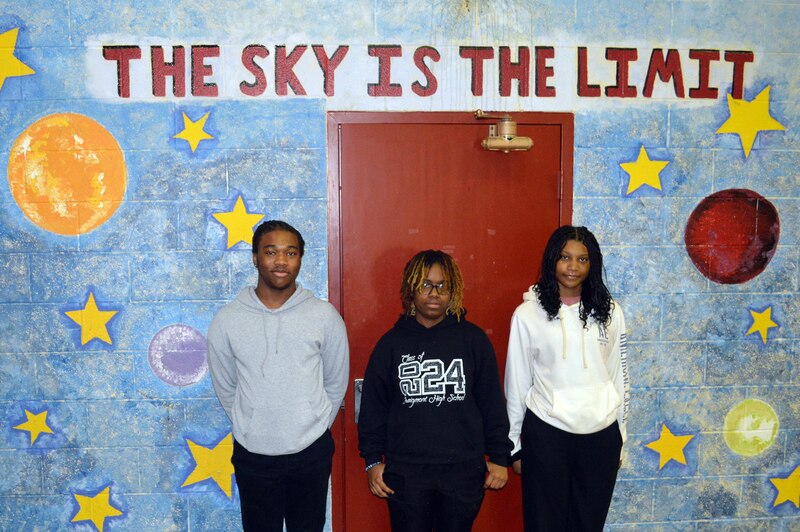
The Craigmont planetarium is a one-of-a-kind offering in Memphis’ public school system. And it’s an example of how school building improvements can enrich student learning. Since the restoration, science teacher Wayne Oellig has been able to teach a new Earth and space sciences class. Enrollment in the course is maxed out, he said, and more students want to be able to take the class.
“A big struggle with any science class is just putting a visual to what’s going on,” Oellig said. “It’s hard for kids to imagine orbital mechanics.”
What the students see in the planetarium “pretty much directly translates” to what they see outside, he said.
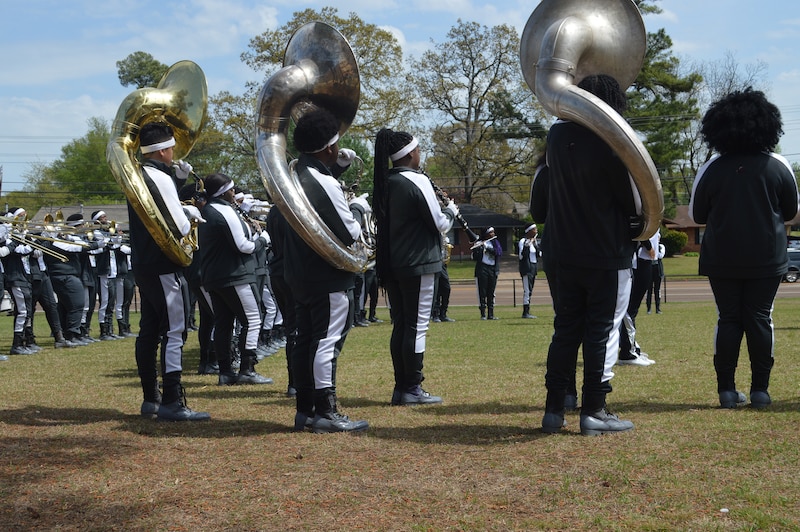
Teko Fair, a senior at Craigmont, considers himself a visual learner, and said the planetarium helps him make better sense of concepts he learns in Oellig’s class. He and classmate Nijah Means said they’re glad they don’t have to leave their high school for the planetarium experience.
“And with the teacher that we have, he’s pretty cool explaining lessons and showing us stuff,” Nijah said.
After the lesson indoors, students headed outside to observe the actual phenomenon they saw depicted in the video, with the moon eventually covering 98% of the sun.
Both Nijah and Teko agreed this experience was better than in 2017, when they didn’t know exactly what was happening.
“I’m trying to catch it move,” Teko said as he observed the eclipse through his glasses.
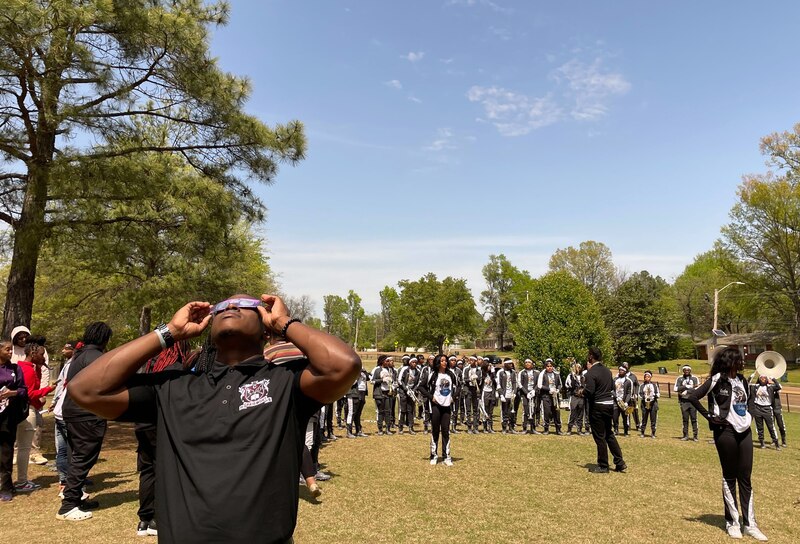
Opened with the new school in 1975, Craigmont’s planetarium is one of a handful of district-run planetariums in Tennessee. Under longtime director Duncan Teague, Craigmont students produced a newsletter about the cosmos, presented plays using the planetarium’s special effects, and even hosted an astronaut for a special event. In 1986 when Halley’s Comet was visible from Earth, the planetarium hosted hundreds of people one night to locate the comet on a star map on the dome, then walk outside to view the real thing through a telescope.
Soon after Teague retired in 2008, the planetarium stopped functioning. But after an investment by the Memphis school district and a local fund-raising campaign, the facility came back to life in 2018 — just missing the last solar eclipse in 2017.
Oellig said the planetarium is still only about 70% to where it needs to be: He’d like to update the seats, which are original to the planetarium and don’t tilt backward. The audio could be improved, and the dome could be cleaner, he said.
But he hopes soon to have approval from district officials for field trips to return to the planetarium, so Craigmont can once again host other Memphis students.
The planetarium also opens up new areas of study or hobbies for students at Craigmont, said principal Derek King.
“We want to make sure that we’re utilizing it well, respecting it, maintaining it, and then finding a way for other people to be able to come in and utilize it as well,” said King, who viewed the eclipse outside with students from the band and the science class.
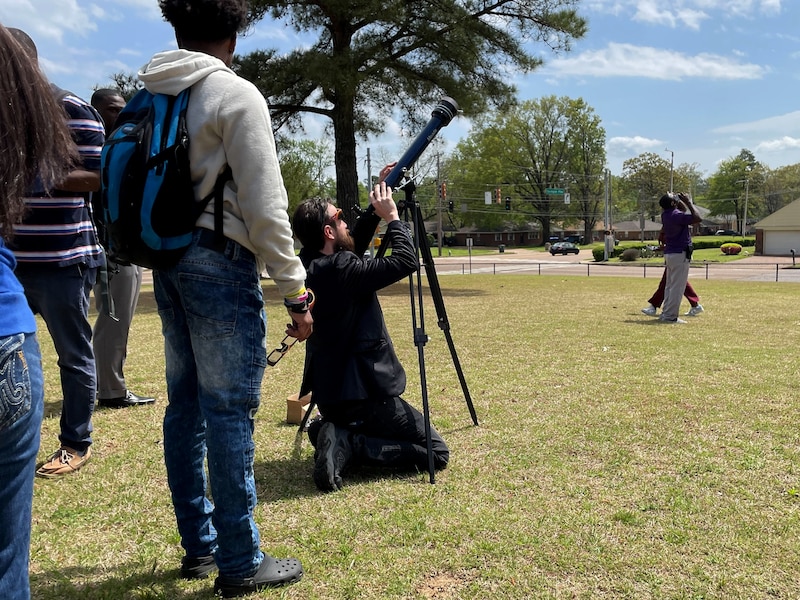
Having a real-life scientific event for students to experience is something of a “Super Bowl for science teachers,” Oellig said.
“Y’all,” he shouted minutes before the peak eclipse, “this is about as good as it’s gonna get!”
At 1:58 p.m., students in the band joined the students in Oellig’s science classes to stare up at the sky through their glasses and see what was by then just a golden sliver of the sun.
Laura Testino covers Memphis-Shelby County Schools for Chalkbeat Tennessee. Reach Laura at LTestino@chalkbeat.org.

